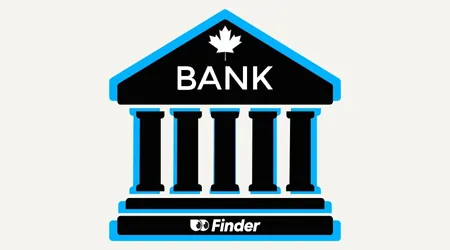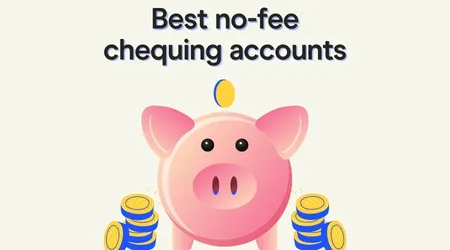
Banking statistics and trends in Canada for 2025
Explore key banking statistics and figures from the Finder: Consumer Sentiment Survey January 2025.
Read more…The 100 Envelope Challenge is a trend that originated and gained traction primarily on social media. When done correctly, you can save just over $5,000 in 100 days.
The 100 Envelope Challenge is a savings challenge that helps speed-run saving by making you save $5,050 in 100 days—if you stick with it.
To do the 100 Envelope Savings Challenge, you need some cash and—you guessed it—100 envelopes. Next, label each envelope 1 through 100. You’ll need at least $1 to begin.
For 100 consecutive days, add cash to an envelope that equals its number. For example, you would add $1 to the envelope marked ‘one’ and $10 to the envelope labeled ’10.’
There are a few ways to tackle this challenge, such as going in order, starting from the first day: $1 in the ‘one’ envelope, $2 in the ‘two’ envelope and so on. You could also bounce around, such as doing envelope 100 first and then doing a smaller amount the next day. Whichever order you choose, the goal is to save something each day for 100 days straight.
After 100 days, all 100 envelopes should be filled with cash totaling $5,050, which you can invest, save or spend as you please. Congratulations on completing the 100 Envelope Savings Challenge!
Physical envelopes appear to be the most common way people are doing the challenge, since it offers a simple way to track savings. There are also many influencers on social media selling envelope books with sleeves for cash and a calendar to check off each completed day.
However, you can do the challenge without physical envelopes or a special book.
You can track contributions with pen and paper and simply send the contributions to your preferred savings account each month. For example, you could write out each day and draw a checkmark next to the completed days:
As an added benefit, you’ll earn interest on every dollar transferred into your account. Your total savings after 100 days will be even higher than if you save cash in physical envelopes.
Narrow down top savings accounts by monthly fees, APYs and perks. For a closer comparison, tick the Compare box on multiple options to compare them side by side.
To make comparing even easier we came up with the Finder Score. Interest rates, account fees and features across 50+ savings accounts and 25+ lenders are all weighted and scaled to produce a score out of 10. The higher the score the better the account - simple.

"Whether you’re completing a savings challenge or just trying to build an emergency fund, consider placing your funds in a high-yield savings account where they can grow passively. To save even more, look for an account with no balance requirements, monthly fees or messy APY tiers to keep life simple."
The challenge requires saving $5,050 in just over three months, which is a bit of a time crunch and can be challenging for many people.
If you go in numerical order, the first 10 days of the challenge require saving just $55, which is fairly manageable. But in the final days of the challenge, following numerical order, you must save $1,045 in just 10 days.
An easier approach to the challenge is going out of order based on how much you can save on a given day. For example, you could fill the $100 envelope on your payday and save smaller amounts on non-paydays.
If following the 100 Envelope Challenge to the letter (pun intended) isn’t doable for you, you can modify the challenge to something more feasible or consider other money-saving strategies.
The 100 Envelope Challenge can be great for those looking to build discipline and savings quickly. If you struggle to save, this challenge might help you build the habit and a nice chunk of cash within a short period.
However, saving $5,050 in 100 days is a lot of money. If that’s way over budget for you, consider modifying the challenge to fit your budget better, such as stopping at day 50 or turning the daily challenge into a weekly one.
Check out our savings guides and accounts for more savings guidance and top accounts to store your funds.

Explore key banking statistics and figures from the Finder: Consumer Sentiment Survey January 2025.
Read more…
Compare the features of 8 of the best no-fee chequing accounts in Canada, and find out how to avoid transaction fees.
Read more…
Earn cash, rewards points, bonus interest rates and more with these new bank account offers and promotions.
Read more…
Learn about the different types of bank accounts for your teenager and how to choose the right one.
Read more…
Compare chequing accounts and learn about our top picks. Compare different features and see which one is right for you.
Read more…
Compare and open a bank account online in Canada in as little as 5 minutes. Learn what you need to apply and how to get started today.
Read more…From a 4% to a 5% interest savings account, here’s how to find the best savings rates in Canada.
Compare current savings account interest rates so you can grow your savings.
Earn a high interest rate on your savings with no minimum deposit requirements and no monthly fees with the Neo Money Account.
Discover how to budget for a new home, save effectively and plan for ongoing expenses.
Explore how to create an emergency fund in Canada and where to grow your savings.
Maximize your savings with a TFSA, enjoying tax-free growth, flexible withdrawals and diverse investment options.
Start saving for your retirement at any age by learning about registered retirement savings plans.
Compare the best high-interest savings accounts in Canada to build a bigger bank balance.
Savings account interest is taxable in Canada. Find out how taxation works and how to minimize what you owe.
Find out about competitive interest rates, minimal fees and other perks you can enjoy when you bank at a nonprofit institution.